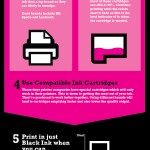How Does Provident Fund (PF) Work?
Any person who has been on the professional front for a few years knows about EPF (Employee Provident Fund) due to its compulsion for all salaried employees. It is a social security scheme that provides employees financial security in the future. It is one of the first investment tools along with insurance. Administered by Government of India, it is a popular, long term investment tool. It’s safety, structure and rate of return has made it a part of the retirement suite as well till the person is working.
Registration
An Employee Provident Fund (EPF) is a compulsory scheme to be followed by all salaried individuals earning more than Rs 15,000 under The Employees’ Provident Funds and Miscellaneous Provisions Act, 1952. An employee is automatically registered for it when he joins his first job. An employee with an existing account after 2016, will simply have a EPF Number called as the Universal Account Number (UAN) which will remain the same throughout his working life.
Contributions
Under this scheme, your employer deducts a fixed amount from your monthly salary and adds it to your PF account, along with their contribution.
As an employee, you contribute 12% of your basic pay + dearness allowance. This ratio is matched by your employer who also contributes 12% of the basic + DA of the employee. However, herein lies the difference as the employer’s contribution is split into EPF and EPS – the two retirement schemes under the EPF.
EPS is Employee Pension Scheme which is governed by Employees’ Pension Scheme 1995 and is a part of the pension contributions in the EPF.
The EPF contribution is 3.67%, of this 12% goes to EPF and 8.33% goes towards EPS.
Points to Note
A maximum bar of Rs 15,000 as basic is set to get the maximum advantage under EPS. The maximum contribution allowed is Rs 1,250 (8.33% of Rs 15,000) with excess going to EPF.
The Budget speech of 2018 announced that the government will meet the entire 12% contribution of the employer to EPF for the first 3 years for new members.
Returns
The EPF portion of the employer earns 8.75% interest from the government. However, the EPS scheme does not offer any interest and is a pension scheme. Below is an illustration to show you how your EPF will accumulate.
For e.g. If you join as an employee with a salary of Rs 30,000 from the month of June, this is how your EPF account works.
| Month | Employer Contribution (3.67%) | Employee Contribution (12%) | Monthly Balance at month end | Interest applicable |
| June | Rs.1,101 | Rs.3,600 | Rs.4,701 | Nil (Just joined company) |
| July | Rs.1,101 | Rs.3,600 | Rs.9,402 | Rs 4,701 X 8.75/12=Rs.34.28 |
| August | Rs.1,101 | Rs.3,600 | Rs.14,103 | Rs.102.83 |
| September | Rs.1,101 | Rs.3,600 | Rs.18,804 | Rs.137.11 |
| October | Rs.1,101 | Rs.3,600 | Rs.23,505 | Rs.171.39 |
| November | Rs.1,101 | Rs.3,600 | Rs.28,206 | Rs.205.67 |
| December | Rs.1,101 | Rs.3,600 | Rs.32,907 | Rs.239.95 |
| January | Rs.1,101 | Rs.3,600 | Rs.37,608 | Rs.274.23 |
| February | Rs.1,101 | Rs.3,600 | Rs.42,309 | Rs.308.50 |
| TOTAL EPF Balance at year end | Rs.9,909 | Rs.32,400 | Rs.2,11,545 | Rs.1,473.96 |
Notes:
1. Monthly balance=Employee contribution+ employer contribution
2. Interest amount= [Monthly balance X interest rate]/12
Reasons for popularity of EPF
- Tax deductions – If you remain in employment of the same or even different companies for more than the minimum 5 years of continuous service, the EPF savings and interest earned is tax-free.
- Withdrawal -The entire EPF withdrawal is allowed with the tax benefits after 5 years. You can withdraw the EP portion or get it transferred by obtaining a “scheme certificate”, if you have had a break in your service tenure and it is less than 10 years.
- Safety and stability – EPF provides stability and safety of both the principal and interest component. Since the investment is done in debt instruments, the exposure to Equity markets is nil and this ensures that no market risk affects your corpus.
Voluntary Provident Fund
If you wish you can contribute more than the mandatory 12% to your EPF account. The excess amount is managed under a separate account called Voluntary Retirement Fund(VRF).
Additional Features of EPF
- Only the employer makes the contribution towards the EPS account
- Sick units and with organizations less than 20 employees are allowed to contribute 10% instead of the 12% towards the employee EPF
- To give additional benefit to women employees, women employees contribution has been reduced to 8% for the first 3 years of their service against the 12
Drawbacks of EPF
Since the investments of EPF are debt oriented and equity exposure is lacking, there is a chance that in scenarios of high inflation, you could be looking at negative returns.
To address inflation, you should look at investments like fixed deposits. With shorter tenors and high interest rates, fixed deposits will not only help you increase your retirement corpus, but also help you offset against the different risks of other market-linked investments in your portfolio.
Why fixed deposits can be a better option for you?
While EPF does have its benefits specially for retirement planning, to multiply your PF corpus you can go for tax saving fixed deposits as well. Fixed deposits are highly liquid investments that can be easily withdrawn before the maturity date, in case you need immediate funds. You can even raise a loan against FD for a marginal rate of interest (over and above the interest you are earning on your FD). Early withdrawal of PF is not easy and you have to incur taxes in case you withdraw your PF before completing 5 years of continuous service.
To add to the EPF option, you can look at high yielding fixed deposits with Company FD where your principal is in safe hands and you also earn high returns. You can even look at the monthly payout option (Cumulative) and non-paying option (Non-Cumulative) for earning interest. With assured high interest returns and credibility guaranteed by ICRA’s MAAA (stable) rating and CRISIL’s rating, your investments are never at risk. You can start investing in Finance FD with a minimum deposit amount of INR 25,000. To calculate how much interest you will earn at maturity, use the Online FD Interest Rate Calculator.
Author Bio: Aman is working in the domain of Investment management in one of the top universities. He has published research papers and case studies in Investment and Fixed Deposit marketplace. He is an avid blogger in the domain of Investment management. you can also find him on social networking platforms.
















